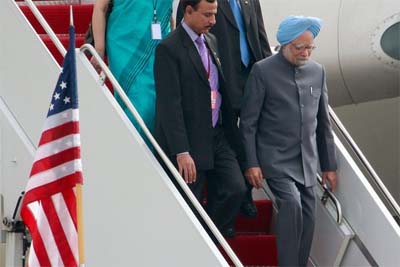Prime Minister Manmohan Singh predicted last week that between 2009 and 2010 the country could well expect a 6 per cent rate of growth. This is good news indeed given that the economy is facing a dire situation in over 200 of its 600-odd districts and is expecting inflationary pressures on essential commodities. The SENSEX, the national stock index, this week reached over 16,000 – the highest level in about 16 months. The 2008 global economic meltdown in the U.S. that sent the world economy reeling seems to be fading from the thoughts of Indian financial sector pundits. But it was always evident that India would be saved from this economic turmoil since its financial regulators had ensured that the economy’s external linkages were kept restricted and under strict monitoring. This explains the fact that the Indian rupee was never made convertible on the capital account.
This time, India had taken to heart lessons from the 1997 financial crisis of ‘the Asian Tigers’ knowing that, in such a crisis, no bailout was likely to be available. The caution that permeates the Indian financial system has been, in retrospect, remarkable: national banks which make up the bulk of the banking sector were left intact even after the economic reform of 1991. Whether it is the major public sector companies or the airlines, the share of government in industry and services has not been consciously scaled back, and the private sector has been allowed to grow within set parameters. In retrospect, this looks like a winner considering that the massive bailouts to the U.S. financial and industrial sector have ended with many major corporations in government hands.
There was another positive asset which cushioned the blow for the Indian economy: its continually expanding middle class which has created domestic demand to keep the wheels of the economy churning. This helped to immunize the economy from negative external impulses. As a result, the effect on the economy from the devastation experienced in the U.S. and Europe was limited in duration and largely affected only Indian companies with high external borrowings. The minor slow-down in domestic demand for housing, transport, and services was further mitigated by enterprising solutions to reap the fortune at the bottom of the pyramid, which has been the focus of Indian government policy. The prevailing mantra here is ‘inclusive growth’ which ensures that the benefits of growth flow equally to both those at the top and those at the bottom. It is not surprising that recent World Bank and IMF meetings have emphasized the same theme. The two sectors hit hardest in the U.S. – real estate and automobiles – are both looking up in India, due to the low-cost TATA car, the ‘Nano,’ and ‘Nano-sized’ housing projects.
Of course, all this does not mean that India has no concerns about the financial management of the world’s economy. Although its share of global GDP is only 1.5 per cent, and, of world trade, only 2 per cent, its emerging economic status has meant a pre-occupation with the need to reform the Bretton Woods institutions to better reflect the likely changes in global economic power in the 21st century. India also hopes that, together with the U.S., it will be able to work out a viable solution to the impasse on agricultural subsidies in order to re-start and conclude the Doha negotiations. This is a major point of interest for India at the G20 Summit, where India will be represented as part of the outreach group. India believes that a stable yet adaptable international financial system is the need of the hour, since massive transfers of resources will be needed in the coming decades to mitigate the scourge of climate change and the challenges of free trade.
Rajendra Abhyankar, former Indian Ambassador, and advisor at The Asia Foundation.
This article was first published here by the Asia Foundation.

